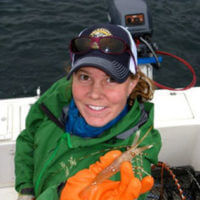Size-at-age and diet composition of Pacific halibut (Hippoglossus stenolepis) in Cook Inlet, Alaska
Since the 1970s halibut size-at-age has decreased in southcentral Alaska; the mechanisms causing decreased size-at-age are unknown. The objectives of this study were to 1) compare size-at-age of port-sampled fish in Homer to survey samples from Gulf of Alaska; 2) assess stable isotope values (δ13C, δ15N) of halibut by sex, size, location and date; 3) determine mean stable isotope values for prey; and 4) identify prey associated with smaller and larger size-at-age. We used port-sampled halibut from the Homer sport fishery due to the quantity of available carcasses. Port-sampled fish were generally larger than survey sampled fish from the same region. Halibut had a wide range of stable isotope values that varied with all factors. Prey isotope values were wide and overlapping, allowing for distinctions among teleost, cephalopods, crustaceans and amphipods. Older and younger fish of the same size and sex had different proportions of prey assimilated into their muscle.
Current status: FAST Lab Program Manager (Anchorage, AK)
Funding for this work was provided by the Pollock Conservation Cooperative via the Alaska Education Tax Credit Program.

